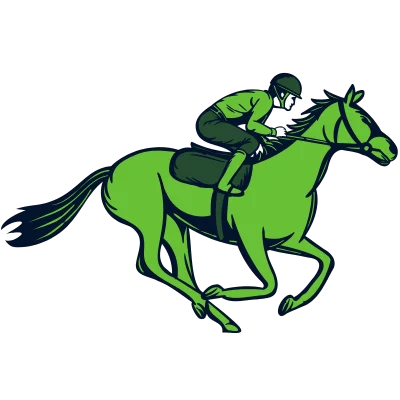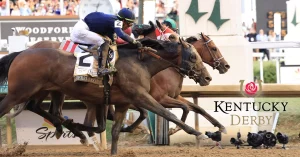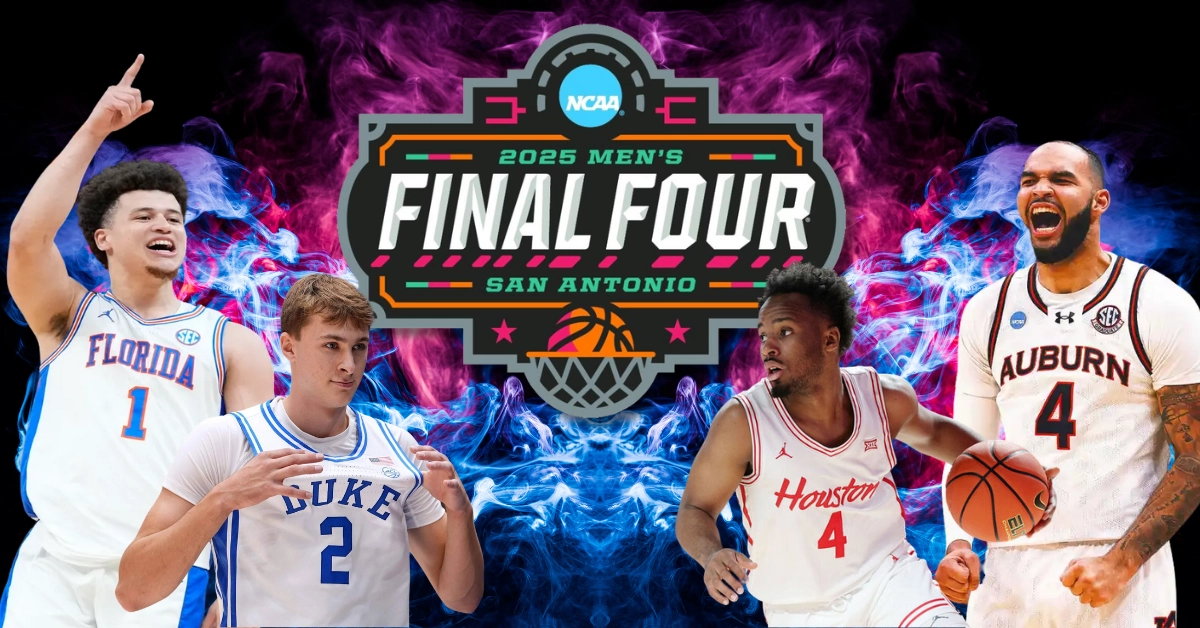Breaking Down the Triple Crown | What it Takes to Win It All
The Triple Crown of Thoroughbred Racing is so much more than a title. The trifecta of horse races is a gauntlet of greatness, a baptism where legends are made and hopes are left trampled in the dust.
And since Sir Barton’s sweep in 1919, only 13 horses have achieved this feat and had their names etched into the annals of racing history. The equine titans—Secretariat, Seattle Slew, American Pharoah, and Justify—didn’t merely outrun their rivals; they bent the limits of biology.
But the Triple Crown isn’t just seeing which horse is the fastest or has the finest pedigree. It’s also survival of the fittest. Horses have to negotiate a five-week ordeal of changing distances, new competitors, and physical strain that would break mortals.
What does it take to win it all? A lot! Join us as we unravel the anatomy of the rare and legendary Triple Crown triumph and why it’s still one of the most grueling (if not the most) challenges in all of sports. Even in the age of genetic science and the best training available, it still feels like an impossible feat.
What is the Triple Crown?
The Triple Crown is a trial by fire. This is a trio of some of the most iconic horse races and just entering all three is a big gamble. To win them means that a horse has to master three different challenges, and each one has been custom-made to exploit any weaknesses and expose an equine’s frailty.
The Races: A Trio of Trials
Which races make up the Triple Crown? Look below for an overview of each one!
1. Kentucky Derby, aka The Run for the Roses
Churchill Downs’ iconic twin spires hover over 150,000 fans (the women are all in over-the-top hats, and mint juleps are the drink of the day) every first Saturday in May. The Derby is a 1 1/4-mile stampede where 20 young colts—many racing beyond 9 furlongs for the first time—barrel around the circuit in a vortex of dirt, sweat, and raw instinct.

Key Details
- Distance: 1 1/4 miles (10 furlongs).
- Surface: Dirt.
- Field Size: 20 horses.
- Signature Challenge: The frenzied start usually determines the whole race. Jockeys fight for position like commuters in a subway crush, as they know that one single misstep will end their bid.
2. Preakness Stakes – ‘The Middle Jewel’
Just two weeks after the Derby, the action heads to Baltimore’s Pimlico Race Course. The Preakness is a shorter, faster test, with 1 3/16 miles of tight turns and tactical racing.

Key Details
- Distance: 1 3/16 miles (9.5 furlongs).
- Surface: Dirt.
- Field Size: 8-12 horses.
- Signature Challenge: New rivals usually target this race, as they make use of their rested legs to ambush any weary Derby survivors.
3. Belmont Stakes – ‘The Test of the Champion’
And then, five weeks after the Derby, the series culminates at Belmont Park’s sprawling 1 1/2-mile track. The Belmont is a marathon that’s disguised as a sprint, and this is where speed-bred horses can fall apart under the seemingly never-ending distance.

Key Details
- Distance: 1 1/2 miles (12 furlongs).
- Surface: Dirt.
- Field Size: 8-12 horses.
- Signature Challenge: The sandy surface, which is nicknamed “Big Sandy,” saps a horse’s energy with every stride they take.

The Triple Crown’s Distinct Brutality
The series calls for a versatility that most horses just don’t possess. A Derby winner has to transition from a 10-furlong stampede to a 12-furlong endurance test in just five weeks—all while racing against their rivals, and they’ve been resting. It’s a feat that’s akin to asking a sprinter to win a marathon and then a decathlon a little over a month later.
The Challenges of Winning the Triple Crown
The road to the Triple Crown glory is littered with obstacles that test a horse’s body, mind, and team, and the following are the hurdles that every contender has to clear.
The Physical Demands on the Horse
Thoroughbreds are not machines, despite what some may think about the beautiful creatures. Their legs, which are thinner than a human wrist, absorb 2,500 pounds of force per stride, and the Triple Crown’s compressed schedule pushes their bodies to the brink.

Critical Factors
- Recovery Time: Most trainers space races 4-6 weeks apart. The Crown’s five-week timeline leaves little to no room for healing.
- Distance Variance: The Belmont’s 12 furlongs are 20% longer than the Derby’s 10, which means the horses have to have a genetic stamina that very few inherit.
- Hidden Injuries: Bruised hooves, strained tendons, and muscle fatigue are all lurking beneath the surface. In 2014, California Chrome raced the Belmont with a cracked hoof, and it shattered his bid.
Competing Against New Challengers
The Crown’s structure invites strategic warfare. Trainers are often holding back elite horses to target specific races, and this creates ambush-like scenarios for other entrants.

Tactical Threats
- Preakness “Shooters”: Horses like 2009’s Rachel Alexandra bypass the Derby to enter the Preakness on fresh legs.
- Belmont Specialists: Distance-bred horses like 2022’s Mo Donegal will skip the Derby and Preakness—they’re saving up their energy for the Belmont’s marathon.
Track Conditions & Jockey Strategy
No two racetracks are the same, and the horses have to adapt to surfaces that go from sloppy to rock-hard, all within weeks.

Key Variables
- Churchill’s Mud: The Derby’s 20-horse field churns the track into a bog if any rain falls. Some horses will panic in the muck; others, like 2018’s Justify, charge right through it unbothered.
- Pimlico’s Turns: The Preakness’s tight bends favor agile horses, but the surface can vary from year to year.
- Belmont’s “Big Sandy”: The sandy track drains stamina, and this rewards those jockeys who ration their horse’s energy like a pilot who is managing fuel.

Jockey IQ
A rider’s decisions can make or break a Crown bid. In 2015, Victor Espinoza held American Pharoah off the pace early, as he was preserving his energy for a late surge. “You have to feel the horse,” Espinoza said. “If he’s struggling, you adjust. If he’s flying, you let him soar.”
Key Traits of a Triple Crown Winner
The Crown isn’t won by fluke or accident. It requires a horse to embody four very hard-to-come-by pillars of excellence, such as the ones below:
Elite Pedigree & Breeding
Bloodlines are the basic blueprint. Triple Crown winners usually descend from sires and dams that balanced speed with staying power.

Genetic Hallmarks
- Speed-Stamina Hybrids: Secretariat’s sire, Bold Ruler, was a sprint champion; his dam, Somethingroyal, gifted him with his Belmont-ready endurance.
- Northern Dancer’s Legacy: This 1964 Derby winner’s bloodline flows through the veins of modern legends like American Pharoah and Justify, and that equals compact builds and nonstop drive.
Speed and Stamina Balance
A Crown winner has to toggle between these two things: explosive bursts and marathon endurance.

Performance Benchmarks
- Derby Speed: Sub-2:02 times are standard for contenders. Secretariat’s 1:59.40 (1973) still remains out of reach for almost all horses.
- Belmont Stamina: The winner has to sustain a 12-furlong slog. American Pharoah averaged 36 mph in his Belmont—a pace that broke all of his rivals.
Strong Mental Toughness & Adaptability
The crowds, the chaos, and the pressure are all things that separate the mere contenders from the champions.

Mental Milestones
- Crowd Immunity: Justify (2018) remained calm amid the Derby’s 150,000 screaming fans. The others? Some bucked or refused to load.
- Weather Resilience: Seattle Slew (1977) won the Belmont with a fever and swollen legs, which is proof that toughness can trump pain.
The Right Training & Preparation
Training a Crown winner? That’s a whole different kettle of fish!

Training Tactics
- Bob Baffert’s “Bridge” Workouts: Short, intense drills between races are how trainers maintain a horse’s fitness without burning them out.
- Juvenile Foundation: Almost all Crown winners begin to race when they are 2-year-old to build up their stamina. Justify broke this mold by winning without juvenile starts, which was a risky gamble that took meticulous planning.
Famous Triple Crown Winners & Their Legacies
The few Triple Crown winners are known even to those who know nothing about horse racing. Secretariat? He got a movie and a book (sorry, Seabiscuit—you didn’t run the Triple Crown, but you probably would’ve won). The horses that did win? They made history.
Secretariat (1973) – The Untouchable Standard
The Horse: Nicknamed “Big Red” for his striking chestnut coat and imposing stature, Secretariat wasn’t just fast—he was transcendent. A genetic marvel with a stride that ate up the ground, he turned races into spectacles, leaving the audiences breathless and his rivals far behind in his dust.

The Stats
- Derby Time: 1:59.40 (still a record to this day).
- Belmont Margin: 31 lengths—a distance so vast that the second-place horse doesn’t appear in the same camera frame, which is unheard of.
- Heart: A necropsy revealed that his heart weighed 22 pounds, which was nearly double the average thoroughbred’s.

The Legacy
Secretariat didn’t just win—he rewrote physics. His Belmont performance is called “the greatest race ever run.” Jockey Ron Turcotte claimed he never once used the whip; Secretariat surged on pure instinct. But behind the brilliance was a team that defied all convention. Trainer Lucien Laurin bucked tradition by racing him hard as a 2-year-old, which built up the stamina that would fuel his Belmont romp.

The Human Element
Owner Penny Chenery battled skeptics who dismissed Secretariat out of hand after a third-place finish in the Wood Memorial. “They called him a ‘washed-up wonder,’” she recalled. “But we knew he was special.”
Seattle Slew (1977) – The Blue-Collar Phenom
The Horse: A $17,500 bargain purchase with a modest pedigree, Seattle Slew was racing’s ultimate underdog. Unrefined but relentless, he combined brute strength with a fighter’s heart, and he charged to the front and dared others to catch him (they didn’t).

The Stats
- Pedigree: A $17,500 yearling (astoundingly cheap for a future legend).
- Undefeated: Entered the Triple Crown 9-0.
- Belmont Grit: Won with a fever and swollen legs.

The Legacy
Seattle Slew was racing’s equivalent of Rocky Balboa—a scrappy underdog who outworked bluebloods. His aggressive, front-running style intimidated rivals, and in the Belmont, veterinarians urged trainer Billy Turner to scratch him due to illness. Turner refused. “He looked me in the eye and said, ‘I’m winning this damn race,’” jockey Jean Cruguet said.

The Human Element
Slew’s team was as equally unpolished as the yearling. Turner, who was a former taxi driver, and owners Karen and Mickey Taylor (lumber-industry workers) were dismissed as “amateurs” by racing elites. Their triumph proved that heart could win over pedigree.
American Pharoah (2015) – The Drought Breaker
The Horse: With his distinctive “aerodynamic” stride and calm demeanor, American Pharoah carried the hopes of a sport that was starving for a Triple Crown hero. After a 37-year drought, he didn’t only win—he made it look effortless as he glided over the tracks.

The Stats
- 37-Year Wait: Ended the longest Triple Crown drought in history.
- Stride: A 25-foot gallop conserved his energy, which allowed him to dominate in all three of the races.

The Legacy
Pharoah’s 2015 run was a masterclass in preparation. Trainer Bob Baffert used “bridge” workouts—short, intense drills between races—to keep him razor-sharp without burnout. Jockey Victor Espinoza let him dictate the pace, later calling the horse “a professor of racing.”

The Human Element
Baffert nearly quit training after 2014’s near-miss with California Chrome. Pharoah’s success revived his career. “He made me fall in love with racing again,” Baffert admitted.
Justify (2018) – The Unproven Maverick
The Horse: A towering, mud-splattered colt with a rebellious streak, Justify defied all kinds of horse racing convention. Unraced as a 2-year-old, he stormed onto the scene with a combination of raw power and tactical brilliance. He showed that even in the elite world of horse racing, some rules are meant to be broken.

The Stats
- No Juvenile Races: First Crown winner since 1882 without having a 2-year-old start.
- Mud Master: Won the Derby and Preakness on sloppy tracks.

The Legacy
Justify’s campaign was a high-stakes shot in the dark. Trainer Bob Baffert and owners WinStar Farm raced him sparingly pre-Derby, as they prioritized his freshness over any and all tradition. Critics called it reckless; Baffert called it “modern racing.”

The Human Element
Jockey Mike Smith, then 52, became the oldest rider to win the Crown. “Age is just a number when you’re on a horse like that,” he said.
Each Triple Crown winner had their own story—Secretariat’s genetic brilliance, Seattle Slew’s blue-collar grit, American Pharoah’s drought-breaking poise, and Justify’s rule-breaking audacity. But all shared the non-negotiable traits of a champion: elite stamina, mental toughness, and a team that was willing to defy convention. They were outliers in their eras, but their common DNA—literal and figurative—proves that greatness leaves a mark that is etched in horse racing history.
Could We See Another Triple Crown Winner Soon?
The 2025 Triple Crown season is coming closer, and we have to ask: Will we see another Triple Crown winner in the near future? Or ever again? There have been so many advancements in breeding, training, and global competition, so the stage could be set for a horse to meet the moment.

Breeding Trends: The Stamina Revolution
The pendulum is swinging back toward durability. After decades of championing speed for lucrative sprint races, breeders are now reinvesting in bloodlines that balance out pace with staying power. Here’s how they are trying to accomplish this:
- Flightline’s Progeny: The 2022 Horse of the Year, Flightline, has sired his first crop of 3-year-olds. Early reports suggest his offspring inherit his explosive acceleration but with surprising endurance—a rare combination that could dominate the Belmont.
- Curlin’s Legacy: The sons and daughters of Curlin (a dual Classic winner and stamina icon) continue to shine. Horses like Cody’s Wish (2023 Breeders’ Cup Dirt Mile winner) prove his genetics thrive at middle distances. In 2025, a Curlin descendant with extra furlongs in their DNA could emerge.
- Japanese Influence: Japanese breeders are prioritizing stamina to compete globally. Horses like Dura Erede (2023 Japanese Derby winner) hint at a new wave of contenders bred for the Belmont’s marathon.
- The Wildcard: Now, horse racing has AI-driven breeding algorithms. Startups like EquiGen are using machine learning to match sires and dams for optimal stamina-speed hybrids. Could 2025 debut the first “algorithmically bred” Crown contender? It could!

Training Innovations
Modern trainers are mixing tradition with cutting-edge science by doing the following:
- Biomechanical Analysis: Sensors embedded in saddles track a horse’s gait symmetry, flagging muscle imbalances before injuries occur.
- Climate-Controlled Prep: Trainers like Chad Brown use altitude simulators and heat chambers to acclimate horses to Belmont’s humidity or Churchill’s rain.
- Mental Conditioning: Equine sports psychologists now work with high-profile barns. “We teach horses to stay calm in gate chaos,” says Dr. Emma Torres, who consulted for 2024 Derby winner Honor Marie.
- The Risk: Over-engineering. “You can’t algorithmize heart,” warns Hall of Fame jockey Mike Smith. “The Crown will always demand something that you can’t measure.”
2025 Contenders: Horses to Watch
Although it’s way too early to start making concrete predictions, as the 2025 Triple Crown field is still taking shape, there are some rising stars that do have the pedigree and potential to make history:

Royal Valor
- Pedigree: By Flightline x Songbird (a multiple Grade 1-winning mare).
- Style: A tactical closer with a devastating turn of foot. Won the 2024 Breeders’ Cup Juvenile by 4 lengths, rallying from last place.
- Triple Crown Fit: His sire’s speed and dam’s stamina make him a threat at all distances. The Belmont’s 12 furlongs could be his masterpiece.

Midnight Storm
- Pedigree: By Tapit x Beholder (Hall of Famer).
- Style: A front-runner with a truly unshakable grit, he dominated the 2024 Champagne Stakes, leading gate-to-wire in slop.
- Triple Crown Fit: Tapit’s genes look like he’s meant for Belmont success, but can he handle the Derby’s 20-horse scrum?

Sakura Dream
- Pedigree: Japanese-bred by Dura Erede x Chrysanthemum (a Japanese Oaks winner).
- Style: A versatile stalker with a lethal kick. Tore through the 2024 Hopeful Stakes, adapting seamlessly from turf to dirt.
- Triple Crown Fit: Japanese horses are hungrier than ever for U.S. glory. If Sakura Dream stays healthy, his tactical flexibility may very well outwit his rivals.

Ironclad
- Pedigree: By Authentic x Abel Tasman (a dual Classic winner).
- Style: A workhorse who wears down his foes. Won the 2024 Remsen Stakes in a muddy slog, which proved his stamina and resolve.
- Triple Crown Fit: His pedigree screams “Belmont specialist,” but he’ll need to survive the Derby’s bedlam first.

The Calendar Debate
The Triple Crown’s five-week format is still a point of contention. Critics argue it’s outdated in an era of heightened horse welfare focus. Proposals for 2025 include:
- Extended Recovery: Adding a week between the Preakness and Belmont.
- Rotating Tracks: Moving the Preakness to Laurel Park’s safer, renovated surface.
Conclusion: The Ultimate Test of a Champion
The Triple Crown has always been one of sport’s most elusive achievements, and it will stay that way. The equines have to be powerful, the jockeys tactical, and both rider and horse have to conquer three of the most grueling races in five weeks.

Let’s do a quick recap of why the Triple Crown feat is such a rarity:
- Physical Demands: Three races, three distances, minimal recovery time.
- Fresh Rivals: New competitors target each leg with rested legs.
- Track Variability: Mud, heat, and marathon-like distances test the horse and rider’s adaptability.
- Genetic Rarity: Very few horses inherit the speed-stamina balance that it takes to win.
To wear the Crown, a horse must be a perfect trifecta of explosive speed, unyielding endurance, and tactical intelligence. Trainers and jockeys have to walk a very fine line where they balance aggression with caution and instinct with science.
As the 2025 contenders prepare to charge from the gates at Churchill Downs to Belmont Park, is there one horse that will rise to the challenge and etch their name alongside the legends like Secretariat and American Pharoah? We don’t know; the answer is in the dirt and the hooves of the next champion!

Matthew specializes in writing our gambling app review content, spending days testing out sportsbooks and online casinos to get intimate with these platforms and what they offer. He’s also a blog contributor, creating guides on increasing your odds of winning against the house by playing table games, managing your bankroll responsibly, and choosing the slot machines with the best return-to-player rates.








